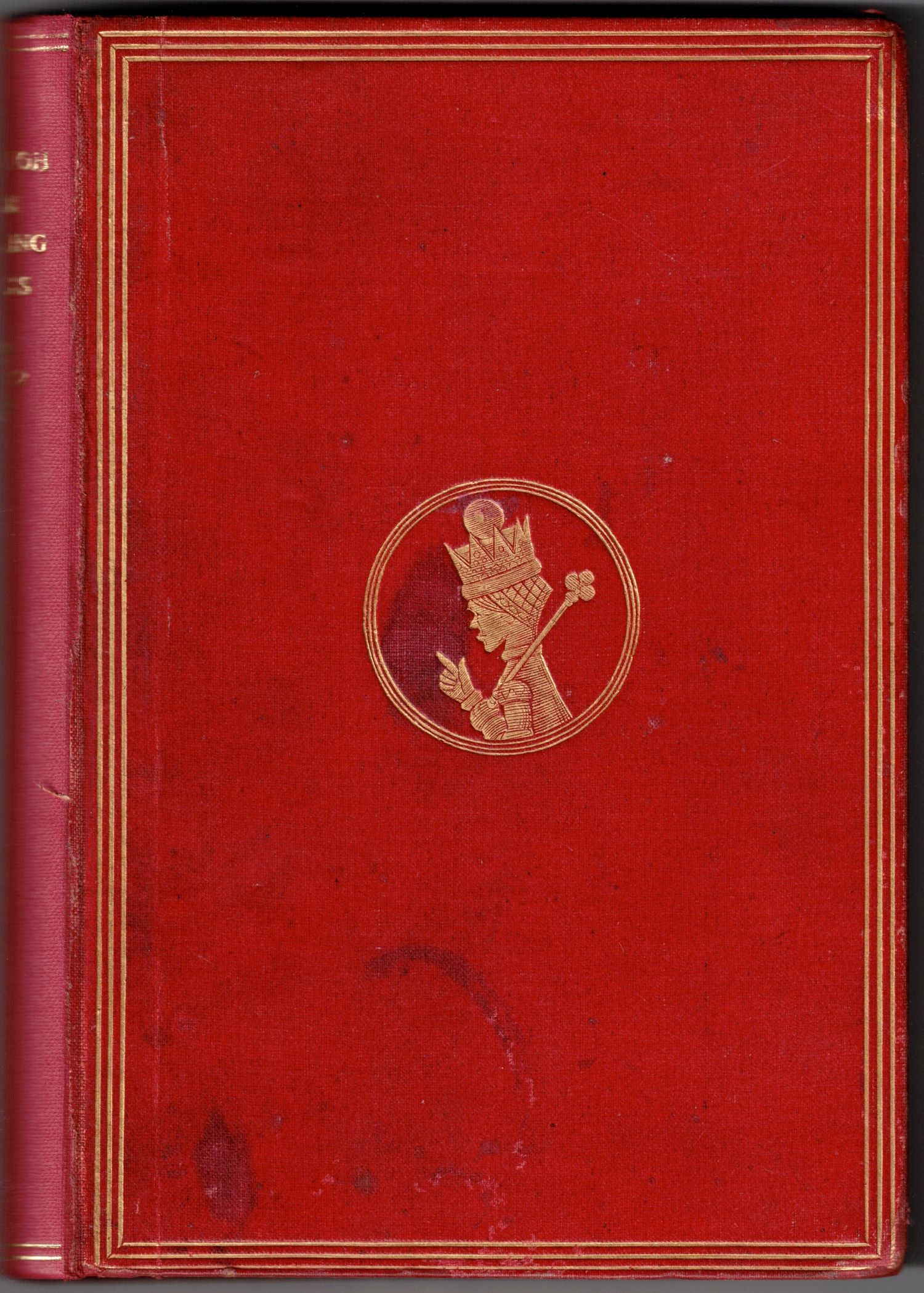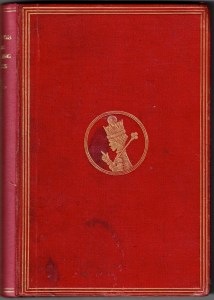THROUGH THE LOOKING-GLASS, AND WHAT ALICE FOUND THERE.
With fifty illustrations by John Tenniel. Forty-fourth thousand.
MacMillan and Co., London & New York, 1877
In-16 gr. (mm. 182x118), tela editoriale (dorso rifatto in tela moderna), illustrazione in oro entro cornice dorata ai piatti, fregio e titolo oro al dorso, tagli dorati, pp. (12),224,(4), con 50 belle illustrazioni in bianco e nero nel testo, realizzate da Sir John Tenniel (1820-1914) brittanique, peintre de genre, portraits, aquarelliste, illustrateur, dessinateur, caricaturiste. Son nome reste attaché à la première édition illustrée anglaise, en 1866, de: "Alice au pays des merveilles" de Lewis Carroll.; 1871 "A travers le miroir et ce qu'Alice y trouva. (Benezit,XIII, p. 535). "Through the looking-glass.", a book which is, if possible, even richer than the first in comic nonsense, even though it does not possess quite the same narrative momentum. From the standpoint of the literature of nonsense it suggests all sorts of possibilities, showing as it does the inquisitive little girl this time leaving the real world of the drawing-room in order to enter the reversed world on the other side of the mirror. To get where she wants to go she must always move in the opposite direction, a principle which provides opportunities for mischief similar to those arising from the variations in size in the first volume. Just as the underground queen in this book was taken from a pack of cards, so the queens in Looking-Glass Land are chess queens and Alice gets involved in the most extraordinary way in a game of looking-glass chess. (Hurlimann B., Three centuries of children's books in Europe, pp. 68-69). Nel 1871 l'autore pubblicava sotto il titolo "Attraverso lo specchio" (Through the looking-glass) una continuazione delle avventure di Alice: qui la bimba compie un viaggio nel paese fatto a guisa di scacchiera che si stende dentro lo specchio: Alice passa al di là della lastra di vetro e v'incontra fra molti altri personaggi strani e tra i fiori che parlano, due esseri singolari: Tuidledì e Tuidledum. (Bompiani, Opere,I, pp. 77-78). Esemplare ben conservato.



